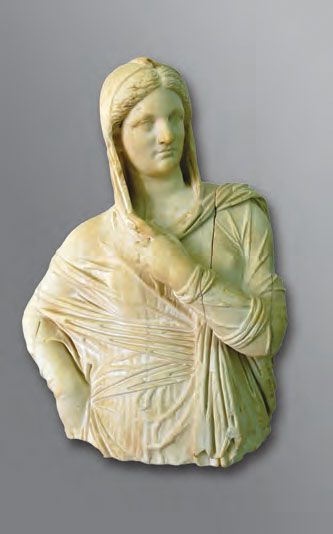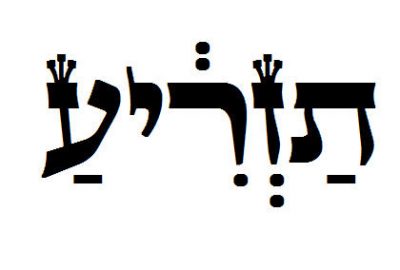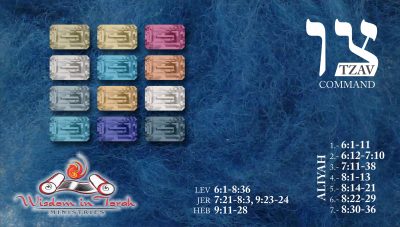Veiling the Head (11:2–16)
After talking about the way Christians relate to the pagan festivals and cult practices of the Roman colony, Paul now turns to how Christian fellowship operates; in particular, he emphasizes points that will make it distinctive as a community.
I praise you for remembering me in everything and for holding to the teachings, just as I passed them on to you (11:2). Praise was a feature of elite society, and so Paul is using language to which the Corinthians can respond. He refers to teachings that have been “passed … on” (lit., “handed down”), that is to say, “traditions.” They are, of course, traditions that carry the weight of an apostle. Presumably, some of the issues Paul goes on to address in chapter 11 are ones that had not arisen during his time in the colony.
The head of every man is Christ, and the head of the woman is man, and the head of Christ is God (11:3). The words “man” and “woman” can also be translated as “husband” and “wife.” The choice of the word “head” (kephalē) seems to indicate that Paul has a hierarchical structure in mind. Although the Liddell, Scott, and Jones’ Greek Lexicon allows the possibility of the translation “source,” this has been disputed.108 The thinking behind Paul’s metaphor is not obvious.
Every man who prays or prophesies with his head covered dishonors his head (11:4). The covering of the man’s head—called the capite velato—was commonplace in a Roman religious cult. One explanation was that it helped to reduce the noise of the animals being sacrificed (see “Roman Portraits”). The statue of Augustus displayed at Corinth showed the emperor with his head covered; similar iconography is found on the frieze of the Ara Pacis (“Altar of Peace”) that he dedicated at Rome. The social elite took an active part in the religious cults of the city by serving as priests, and thus those who had joined the church may have introduced this Roman cultural norm into Christian worship. Thus, Christian worship was expressing not that all were one in Christ but the social divisions of secular society. Praying with a covered head drew attention to the man’s place in Roman society, whereas in Christian worship the focus should be on Christ.
Every woman who prays or prophesies with her head uncovered dishonors her head (11:5). Notice that Paul clearly envisages that women should be involved in prayer and prophecy in the fellowship. The hairstyles of the women in the imperial family at Rome tended to set the trends for women in the rest of the empire. It is clear from portraits on coins and in sculpture that women’s hair in the middle of the first-century a.d. tended to be worn longer than under Augustus. Agrippina the Younger, the wife of the emperor Claudius, and the mother of the future emperor Nero (from a previous marriage), adopted a hairstyle where “the hair is braided and gathered into a long loop; two long strands of curled hair fall at either side of the neck.”109 The covering of the head is an emblem found in sculptural representation in the late republic and under Augustus, where the palla is pulled up over the top of the head. This became an emblem for modesty and chastity. 110Presumably women who felt able to uncover their heads were considered immodest, unchaste, and therefore by definition un-Roman.
It is just as though her head were shaved (11:5). A shaved head could be equated with shame for a women. There is some evidence that shaving was a punishment for adultery.111
If a woman does not cover her head, she should have her hair cut off; and if it is a disgrace for a woman to have her hair cut or shaved off, she should cover her head (11:6). Failing to cover a woman’s head was dishonoring to her husband. A woman would cover her head when she was married.112 Thus if “woman” is translated as “wife” (see comments on 11:3), immodest dress would reflect badly on her marriage and therefore her husband.
109 In a discussion of an aureus (gold coin) of Claudius (a.d. 51) showing the portrait of Agrippina the Younger: D. E. E. Kleiner and S. B. Matheson, I Claudia: Women in Ancient Rome (New Haven, Conn.: Yale Univ. Press, 1996), 65 no. 18.
110 For a funerary relief of the Augustan period showing Vesinia Iucunda flanked by two male freedmen, see Kleiner and Matheson, I Claudia, 199–200, no. 150; for a free-standing portrait statue possibly from the late republic or early Augustan period, see ibid., 197, no. 145.
111 Tacitus, Germania 19 (though the context regards Germanic tribes).
112 See R. MacMullen, “Women in Public in the Roman Empire,” Historia 29 (1980): 208–18.
Arnold, C. E. (2002). Zondervan Illustrated Bible Backgrounds Commentary: Romans to Philemon. (Vol. 3, pp. 157–158). Grand Rapids, MI: Zondervan.
lit. literally
108 See the two articles by W. Grudem: “Does κεφαλη (“Head”) Mean ‘Source’ or ‘Authority Over’ in Greek Literature? A Survey of 2,336 Examples,” TrinJ ns 6 (1985): 38–59; “Catherine Kroeger, IVP, Liddell-Scott, and Others on the Meaning of κεφαλη (‘Head’): An Evaluation of New Evidence, Real and Alleged,” JETS (forthcoming, 2001). However, see Fee, Corinthians, 502–3.
Arnold, C. E. (2002). Zondervan Illustrated Bible Backgrounds Commentary: Romans to Philemon. (Vol. 3, pp. 155–156). Grand Rapids, MI: Zondervan.








Where can I download this video. This is very good.
With regards to the subject of clothing, Shaye Cohen writes:
Within Jewish society of rabbinic times, at least some rabbis wore distinctive clothing that marked them out as rabbis. But Jews did not wear distinctive Jewish clothing…no ancient author refers to a distinctively Jewish hat, or any other item of distinctively Jewish clothing. The archaeological finds of the Bar Kokhba period [the time most likely to distinguish] reveals that the Jews of Palestine in the first and second century C.E. wore clothing that was indistinguishable from that of non-Jews. Tertullian, living in Carthage at the end of the second century C.E., writes that Jewish women could be recognized as Jews by the fact that they wore veils in public. I think it likely, or at least plausible, that Jewish women wore veils in public in the eastern Roman empire, but in the eastern Roman empire many women wore veils in public, and Jewish women would hardly have been distinctive for doing what many other women did…there is much evidence that Jews, whether male or female, were not easily distinguishable from gentiles.
-Shaye J.D. Cohen, “The Beginnings of Jewishness: Boundaries, Varieties, Uncertainties”
Hi Rico,
The question you asked at the end does bear consideration. What is the issue Paul is addressing? Were 1st century believers then to separate themselves from Roman culture by not partaking of its customs, thus being “perceived” as dishonorable? Or were 1st century believers to continue the practices that upheld their honor of Elohim, as founded on Hebraic culture, and taught in Torah with respect to woman and men covering their heads when praying and prophesying publicly? It seems that in 1st century Rome, a Torah observant Jew or grafted-in believer, would have covered their head, whether in the Temple as respect and honor to YHWH, and publicly as a citizen of the Hebrew community. What then does actually separate their coverings from that of the Roman god-centered worship type of coverings? Was an occasion, a particular fabric or style of head dress? And lastly, the posture of the heart’s intentions for wearing the covering, to be seen as a Roman or to bring honor to YHWH? Today, do we do certain “Hebraic” things to be seen as Torah observant, or to bring honor to YHWH? Its a fascinating topic, that should humble us all when thinking we have a superior context and explanation for complicated issues.
Another point I pondered was this comment: “The social elite took an active part in the religious cults of the city by serving as priests, and thus those who had joined the church may have introduced this Roman cultural norm into Christian worship.” This propels me to this century and time. A consideration that I believe still holds true even today. Why do we see politicians attempting to make such strong efforts in their assertions of their “Christian” faith? Because it lends them honor, to associate themselves with the foundation of “Christianity” which is based on the honor and righteousness of the Elohim of the Scriptures. However, putting all the public displays of temporary credibility aside. This comment props up a deeper matter to question. The global system of government is rooted in pagan practices, running the gamut from Babylonian, to Roman. These elites holding onto governmental reigns are born into political circles of influence. Some may contract and negotiate for key positions, of global and national status. If being part of this Beast System is manifestly influenced by its own religious practices, one can reasonably wonder, to which god are each of them a priest of? Priests indeed.
At 17 you said Quote ” If Paul sees Hebrew women prophesying and praying in public with their head COVERED then he said you might as well shave your hair off” unquote. Dont you mean UNCOVERED ???? Correct me if I’m wrong please and Ill re listen to this again
Sorry omit the word ‘Hebrew’….but the question still stands….maybe I don’t get it…does our hair need to be completely covered or is a thin scarf across the top of your head covering enough?
Shalom
wow I did not know or realized I said covered!! It should be UNCOVERED sorry about that
I picked it up because I wear a head covering, either scarfs or Tichels but still searching it out. I know it isnt a commandment to wear them but do so out of respect for my heavenly husband, Yeshua Ha Mashiach. So I was very interested as to your views since you advised me so well as to women wearing Tzitzits. Ty brother Rico. I love wearing scarves but they can be hot in Australia. It does seem to me that there may not have been much distinction between Hebrew and Roman women in dress, sadly even prostitutes covered there hair. Some say they covered their hair so they could wear it short in disobedience and no one would have known. Just when you think you have got it right something else reveals itself.The plot thickens. I love this walk.
Shalom
Shalom my Brother. Hope you and your family are well. I wish we could converse somehow as I have found info that I believe ties nidda and the temple that needs a second witness.